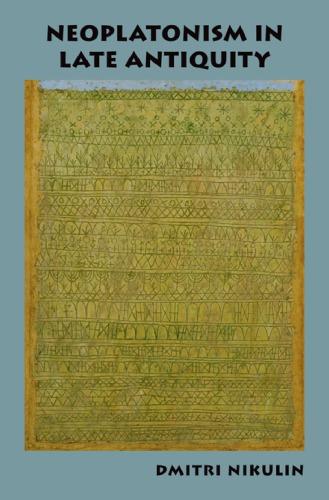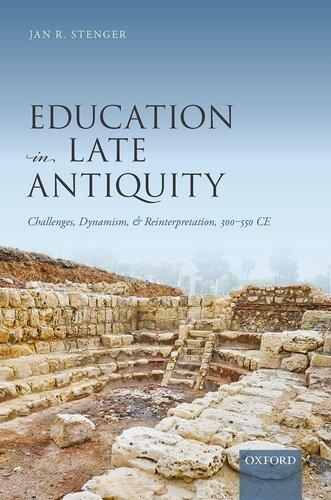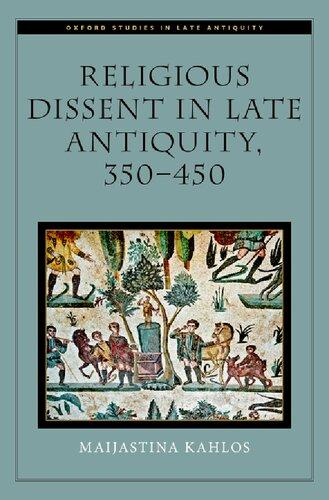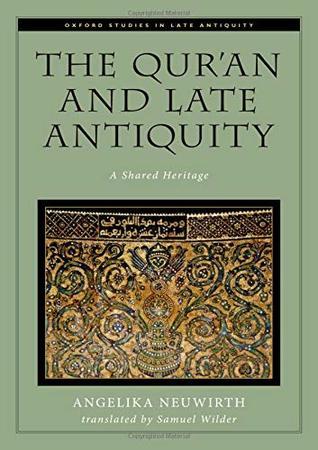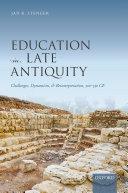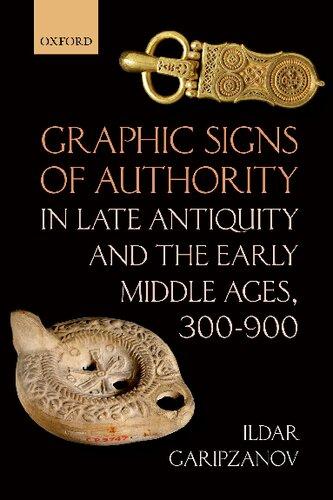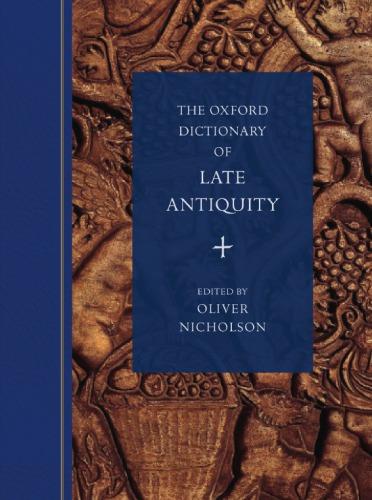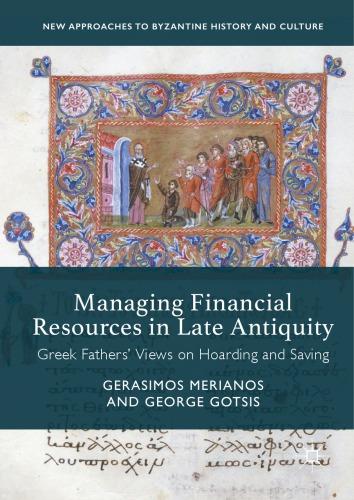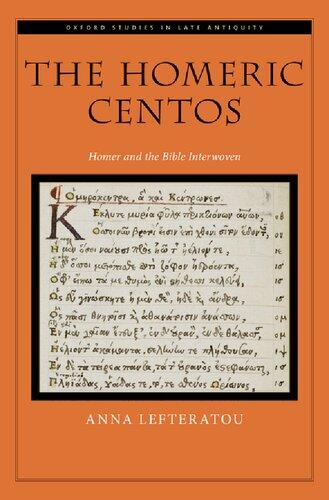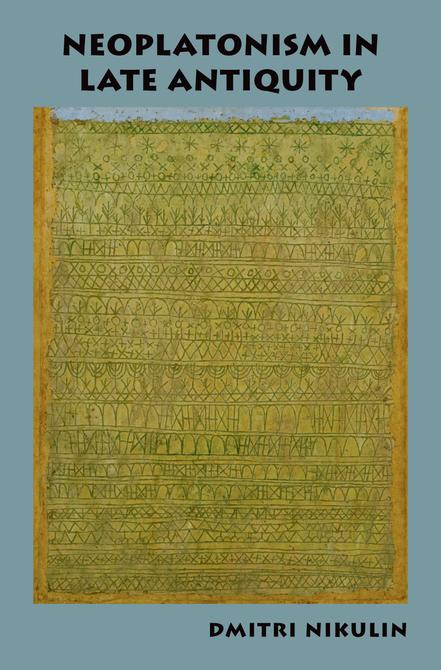Neoplatonism in Late Antiquity
Dmitri Nikulin
Oxford University Press is a department of the University of Oxford. It furthers the University’s objective of excellence in research, scholarship, and education by publishing worldwide. Oxford is a registered trade mark of Oxford University Press in the UK and certain other countries.
Published in the United States of America by Oxford University Press 198 Madison Avenue, New York, NY 10016, United States of America.
© Oxford University Press 2019
All rights reserved. No part of this publication may be reproduced, stored in a retrieval system, or transmitted, in any form or by any means, without the prior permission in writing of Oxford University Press, or as expressly permitted by law, by license, or under terms agreed with the appropriate reproduction rights organization. Inquiries concerning reproduction outside the scope of the above should be sent to the Rights Department, Oxford University Press, at the address above.
You must not circulate this work in any other form and you must impose this same condition on any acquirer.
CIP data is on file at the Library of Congress
ISBN 978–0–19–066236–3 9
Printed by Sheridan Books, Inc., United States of America
For Elena
CONTENTS
Preface ix
Permissions xv
Acknowledgments xvii
PART I Plotinus
1. The One and the Many 3
2. Number and Being 14
3. Eternity and Time 33
4. Unity and Individuation of the Soul 54
5. Memory and Recollection 72
6. Intelligible Matter 90
PART II Proclus
7. The Many and the One 119
8. Imagination and Mathematics 129
9. Beauty, Truth, and Being 147
10. The System of Physics 158
11. Matter and Evil 177
Appendix: Indivisible Lines in Ancient Philosophy and Mathematics 205
Bibliography and Abbreviations 231
Index Locorum 251
Index 271
PREFACE
Until relatively recently, Neoplatonic studies were considered a venerable yet somewhat marginal and rather specialized kind of scholarship. Everyone knew of Plotinus, Iamblichus, Proclus, and Damascius, yet few ever engaged in a close reading and discussion of their work. Today, this attitude has changed irrevocably due to the exceptional contemporary scholarship, the publication of primary texts, and their exemplary translations with excellent historical and philosophical commentaries. As a result, we now have a much better understanding of the complexity, richness, and originality of late ancient thought. Perhaps our own time is to an extent congenial with that of late antiquity, with its multicultural aspirations within crumbling imperial policies, one predominant language of communication and thought, and the extension of philosophical topics and debates to areas not previously considered worthy of the intent philosophical gaze.
The current explosion of interest in Neoplatonism might also mean that we are ready to overcome a set of biased attitudes toward late ancient philosophy, exemplified in at least two modern beliefs: the idea of progress, which includes progress in philosophy, and the sola scriptura approach to the interpretation of texts. The first view presupposes a movement toward a progressive and rationally justifiable end, such as the realization of an even greater freedom in speech, thinking, and action. On this account, the telos of philosophy might be considered achievable in and by the increasing reflexivity and self-transparency of thought, which becomes self-aware by means of the opposition of modern to ancient philosophical practices. This position is best exemplified in Romantic readings of the history of philosophy, in which antiquity is represented primarily by classical Greek thought.
The very term “Neoplatonism,” then, is a misnomer and a modern invention, as are the “Presocratics.” In an attempt to make sense of a complex, refined, and sophisticated tradition, modern interpretations of the history of philosophy as a progressive universal enterprise take late ancient philosophy to be only an intermediate, even if a necessary, step toward the achievement of modern philosophy. Thus, in his Grundriss der Geschichte der Philosophie für den akademischen Unterricht, Wilhelm Gottlieb Tennemann gives a sketch of the entire history of philosophy for students, one that stretches from Thales
to Hegel.1 Tenneman uses the term “Neoplatonism” in the title of the section “Enthusiastic Philosophy of the Alexandrian Neoplatonists” (Schwärmerische Philosophie der Alexandrinische Neuplatoniker), dedicated to the discussion of Plotinus, Porphyry, Iamblichus, Proclus, and other “exalted” thinkers of the “new Platonism.” The uplifting Romantic account of the “new Platonism” suggests that its followers became engaged in the “cognition of the Absolute and the inner unification with it” and did so in a lively, if “more enthusiastic than rational way.” Tennemann is, in turn, referring to the 1782 book by Christoph Meiners, Beytrag zur Geschichte der Denkart der ersten Jahrhunderte nach Christi Geburt, in einigen Betrachtungen über die Neu-Platonische Philosophie, where the term “Neo-Platonic philosophy” (Neu-Platonische Philosophie) is used in the introduction, in which Plotinus, Porphyry, Iamblichus, and Proclus are called the “new Platonists.”2 For many years after, the Romantically inspired understanding of Neoplatonism as a mystic, ecstatic, and somewhat outlandish philosophy becomes associated with the entire tradition of late ancient thought.
The sola scriptura attitude, in turn, is closely connected with the progressive view of the history of philosophy, in that modern thought is held to be original in addressing the most pressing contemporary issues—and yet, at the same time, perennial and hence reverting to its source or origin, which it sees as lying in classical Greek thought. The extant writings of Plato and Aristotle become, then, the philosophical scripture, which need to be rethought and reinterpreted in a specifically modern and progressive way, apart from the muddling and dubious tradition of their transmission, appropriation, and commentaries, which flourish from Porphyry and Iamblichus to Proclus and Simplicius.
This book is a philosophical investigation of various aspects of Neoplatonic thought, in which each chapter is a revised and updated version of a paper published in recent years. The discussion revolves around topics in henology (the one and many), ontology (the constitution of being and intellect in their relation to the one, eternity, and temporality), science (the concept and ontological status of numbers, geometrical objects, indivisible lines, and their role in the constitution and cognition of the world), psychology (individuation of the soul and the role of imagination within the structure of cognitive faculties), matter, otherness, non-being (intelligible and bodily matter), and ethics (the question of evil). So, while the one and many, as well as being and matter, in their various disguises and appearances are among the main themes
1 Wilhelm Gottlieb Tennemann, Grundriss der Geschichte der Philosophie für den akademischen Unterricht, 3rd ed. (Leipzig: Johann Ambrosius Barth, 1820), §§ 200–21; pp. 156–72.
2 Christoph Meiners, Beytrag zur Geschichte der Denkart der ersten Jahrhunderte nach Christi Geburt, in einigen Betrachtungen über die Neu-Platonische Philosophie (Leipzig: Weidmanns Erben und Reich, 1782), pp. 8–9.
of this volume, it also stresses the importance and centrality of natural philosophy and mathematics in Neoplatonism—in Plotinus, who stands at its beginning, and in Proclus, who stands at its apex. In its entirety, the book proceeds more in the sense of Plotinus’ Enneads, which contain a productive cosmos of mutually connected yet independent debates, rather than Proclus’ systematic and unified Theologia Platonica, which provides a systematic deduction of the extant categories from a single source and principle.
The trajectory of the book begins with an exploration of Plotinus’ thought, moving from the one and the many to matter in Chapters 1 through 6, then epistrophically reverts to the same set of topics in Proclus in Chapters 7 through 11, and ends with a study of the concept of indivisible lines, which can then be properly understood in light of the previous discussion.
The opening chapter studies the relation of the one to the many in Plotinus, which is fundamental for his entire philosophy. By establishing a system of axiomatic claims about the one, I intend to demonstrate that both the one and otherness are constitutive of three different representations of the many, which are the ideal numbers, the intellect, and matter. Otherness, then, inevitably appears as dual and ambiguous, as the rationally conceivable principle of negativity but also as pure indefiniteness, in which respect it is similar to matter.
In the treatise On Numbers (Enn. VI.6 [34]), as well as in Ennead V.5 (32).4–5, Plotinus considers the place and the ontological status of number within being and thinking, taking number to be a mediation between the original unity of the one and the multiplicity of the infinite and making an important distinction between essential and quantitative number. Yet he does not explicitly address the question of the constitution of number, leaving the problem without a definitive answer. In Chapter 2, I attempt to reconstruct the constitution, derivation, and construction of number in its various representations, doing so with reference to the hints and arguments provided in the texts of the Enneads.
Chapter 3 discusses the notion of eternity in Ennead III.7 (45), where, against the Pythagorean interpretation of eternity as intelligible substance, Plotinus argues that it primarily characterizes being as the intellect, which is the paradigm of all things. The intellect is marked by simplicity, which, however, presupposes a differentiation between the thinkable and thinking. But the intellect is also life, which is the life of thinking that turns toward the one, the source of the intellect—of its being, thinking, and life. This allows the intellect to think its objects as determinate, in an act that surpasses discursive thought, thus defying and suspending temporality. Against the Pythagoreans, then, eternity is the everlasting non-discursive and self-identical life of the intellect.
Chapter 4 shows that the understanding of the soul in the Enneads is marked by Plotinus’ attempt to establish a Platonic account of the soul, which he does in constant polemics against other theories. On the one
hand, such an account takes into consideration the exegetic and hermeneutic tasks of reading and interpreting Plato. Yet on the other hand, it also establishes the soul as both uniting and separating and hence as mediating between the intelligible and the sensible. In his psychology, Plotinus provides explanations for the unity of the soul and for its individuation, which he understands from the perspective of the synthetic unity of the one and the many. Against the material and formal accounts, I argue that it is the logos that is the source and principle of both unity and individuation of the soul in Plotinus.
Chapter 5 establishes the role of memory and recollection in their mutual relation in Plotinus. This requires a careful reading of the relevant texts in Plato and Aristotle and also a meticulous reconstruction of the arguments of Enneads IV.3 (27), IV.4 (28), and IV.6 (41). Memory for Plotinus is not the Platonic storage of images or imprints coming from the sensible or the intelligible. Rather, memory is a power of imagination used by the soul for the reconstruction and reproduction of the currently absent, which the soul performs starting with the initial sensible impact that becomes the occasion to form a particular memory. Recollection, on the contrary, takes the form of a rational discursive rethinking that reproduces the soul’s experience of the intelligible objects. Recollection, then, is constituted by a triple motion of the descent, staying, and return of the soul to the intelligible.
The concept of matter is in many ways central to Plotinus, who portrays it as negativity, indefiniteness, and unlimitedness, as a deficiency that has nothing of itself and hence cannot be affected. However, in Ennead II.4 (12) he also famously introduces the notion of intelligible matter. In Chapter 6, I argue, first, that the notion of intelligible matter plays an important role not only in Plotinus’ earlier treatises but also throughout the entire corpus of his works; second, that bodily matter and intelligible matter are necessarily related as different yet inseparable; and third, that intelligible matter is not only represented by the indefinite dyad and constitutes the primary indefiniteness of the thinking of the intellect, but is also connected with the imagination and thus with geometrical objects.
In response to Plotinus’ treatment of the one and the many, Chapter 7 is devoted to the discussion of the same problem in the opening sections of Proclus’ Theologia Platonica II.1–3. Beginning the deduction of his grand philosophical synthesis with only two elements in reference to the first two hypotheses of Plato’s Parmenides, Proclus demonstrates that both the one and the many are necessary for the generation of the plurality of henadic, intelligible, psychic, and physical phenomena. While the many is dependent on the one and the one is not dependent on anything, the interaction between the one and the many is essential for the constitution of being. Through a number of precise and subtle arguments, Proclus further establishes the structure of participation as defined by the triad of the unparticipated-participated-participating,
which is then applied to the clarification of a number of difficulties and implicit presuppositions in the text.
In Chapter 8, I consider the role of the imagination as it appears in Proclus’ commentary on Euclid, where mathematical or geometrical objects are taken to mediate, both ontologically and cognitively, between thinkable and physical things. With the former, mathematical things share the permanence and consistency of their properties; with the latter, they share divisibility and the possibility of being multiplied. Hence, a geometrical figure exists simultaneously on four different levels: as a noetic concept in the intellect; as a logical definition, or logos, in discursive reasoning; as an imaginary perfect figure in the imagination; and as a physical imitation or representation in sense-perception. Imagination, then, can be equated with the intelligible or geometrical matter that constitutes the medium in which a geometrical object can be constructed, represented, and studied.
Chapter 9 discusses Proclus’ concepts of truth and beauty in mathematics, science, and ontology. He accepts both Plato’s claim in the Philebus that the good is present in the thinkable in beauty, truth, and symmetry, as well as Aristotle’s assertion that beauty is exemplified in mathematics through order, symmetry, and definiteness. Proclus then demonstrates that, in mathematical objects, beauty transpires in four ways: in the beautiful shape of a sensible reproduction of a geometrical figure; in the beauty of the perfect geometrical figure existing in the intelligible matter of the imagination; in the mathematical object’s definition, with all its properties becoming explicit in constructions and demonstrations by discursive reasoning; and in the beauty of the form in the intellect. On this account, science brings the knowledge, beauty, and goodness of its objects to completion within the unity of the intellect.
Chapter 10 considers the structure of Proclus’ rarely discussed—yet important—Elements of Physics and its original contribution to the understanding of physics in antiquity. As I argue, the purpose of the treatise is not only a systematic arrangement of the arguments scattered throughout Aristotle’s works on natural philosophy using the structure of Euclid’s Elements as a model. Proclus also aims to develop a universal theory of motion or physical change that establishes the first principles as definitions, formulates and demonstrates a number of mutually related propositions about natural objects, and culminates in establishing the existence and properties of the prime mover. Unlike modern physics, which presupposes the applicability of mathematics to physics, Proclus shows that, in the study of natural phenomena, the more geometrico way can be a systematic rational science arranged by means of logic, rather than mathematics.
The problem of evil, one of the central ethical and ontological problems in Neoplatonism, is discussed in Chapter 11. In Ennead I.8 (51), Plotinus presents matter as utter deficiency, as the absence, lack, or privation of the good, and thus as radical evil. In De malorum subsistentia, Proclus explicitly
responds to Plotinus and argues that evil does not exist since non-being does not exist. This means that evil is not opposite to the good, because the good has no opposite, and opposites belong to the same genus. Therefore, in its elusive and indefinite nature, evil should be characterized by the rethought and redefined concepts of privation, subcontrariety, and parypostasis. In its inescapable deficiency, then, evil is the privation and subcontrary of the good that exists parypostatically; that is, as elusively present in its absence as the misplacement of being and the displacement of the good.
The book concludes with a discussion of a text from the Corpus Aristotelicum, On Indivisible Lines, which presents a number of arguments that intend to demonstrate that a geometrical object cannot be built up of indivisible elements. I argue that the treatise’s polemic primarily targets the Academic debate and makes sense only if one takes into consideration the implicit Platonic ontology of mathematical objects, in which the indivisible line is the principle and the form, and not an element, of the continuous. The underlying mathematical ontology, which is implicitly rejected by the author of the treatise, finds its way into Iamblichus’ De communi mathematica scientia and Proclus’ Commentary on Euclid, where geometrical entities are considered to be intermediate between the intelligible and physical objects and constituted by the principles of the one and the many. In this way, the Appendix brings together several central themes of the book, such as one and many, same and other, unity and divisibility.
PERMISSIONS
The individual chapters and the Appendix originally appeared in the following publications:
Chapter 1, “The One and the Many,” as “The One and the Many in Plotinus,” Hermes 126 (1998), pp. 326–40, published by Franz Steiner Verlag GmbH.
Chapter 2, “Number and Being,” as “Foundations of Arithmetic in Plotinus: Enn. VI.6 (34) on the Structure and the Constitution of Number,” Méthexis 11 (1998), pp. 85–102, published by Brill.
Chapter 3, “Eternity and Time,” as “Plotinus on Eternity,” in Le Timée de Platon. Contributions à l’histoire de sa reception (Paris: Éditions de l’Institut Supérieur de Philosophie/Leuven: Éditions Peeters, 2000), pp. 15–39, published by Peeters Publishers.
Chapter 4, “Unity and Individuation of the Soul,” as “Unity and Individuation of the Soul in Plotinus,” in Studi sull’anima in Plotino (Naples: Bibliopolis, 2005), pp. 275–304, published by Istituto per il Lessico Intellettuale Europeo e Storia delle Idee del Consiglio Nazionale delle Ricerche (ILIESI-CNR).
Chapter 5, “Memory and Recollection,” as “Memory and Recollection in Plotinus,” Archiv für Geschichte der Philosophie 96 (2014), pp. 183–201, published by De Gruyter.
Chapter 6, “Intelligible Matter,” as “Intelligible Matter in Plotinus,” Dionysius 16 (1998), pp. 85–113, published by Dalhousie University Press.
Chapter 7, “The Many and the One,” as “The One and the Many in the Structure of Being in Proclus’ Theologia Platonica II 1–3,” Diotima 28 (2000), pp. 77–87, published by Ekdosis Hellēnikēs Hetaireias Philosophikōn Meletōn.
Chapter 8, “Imagination and Mathematics,” as “Imagination and Mathematics in Proclus,” Ancient Philosophy 28 (2008), pp. 153–72, published by Mathesis Publications.
Chapter 9, “Beauty, Truth, and Being,” as “Commentary on M. Martin’s ‘Why Beauty Is Truth in All We Know: Aesthetics and Mimesis in the Neoplatonic Science,” Proceedings of the Boston Area Colloquium in Ancient Philosophy 25 (2009), pp. 93–105, published by Brill.
Chapter 10, “The System of Physics,” as “Physica More Geometrico Demonstrata: Natural Philosophy in Proclus and Aristotle,” Proceedings of the Boston Area Colloquium in Ancient Philosophy 18:1 (2003), pp. 183–209, published by Brill.
Chapter 11, “Matter and Evil,” as “Proclus on Evil,” Proceedings of the Boston Area Colloquium in Ancient Philosophy 31:1 (2016), pp. 119–46, 156–8, published by Brill.
Appendix, “Indivisible Lines in Ancient Philosophy and Mathematics,” as “Indivisible Lines and Plato’s Mathematical Ontology,” in Platons Hermeneutik und Prinzipiendenken im Licht der Dialoge und der antiken Tradition (Hildesheim: Georg Olms, 2012), pp. 291–326, published by Georg Olms Verlag AG.
I want to thank all the publishers for granting permission to reproduce the texts in this book.
ACKNOWLEDGMENTS
I want to express my gratitude for most helpful and thoughtful comments on various parts of the text to Alexander Altonji, Cinzia Arruzza, Werner Beierwaltes, Alain Bernard, Vladimir Bibikhin, Marcelo Boeri, Ulrike Bruchmüller, David Burrell, Annick Charles-Saget, Martha Detlefsen, John Dillon, Eyjólfur Kjalar Emilsson, Michael Frede, Jeremy Gauger, Stephen Gersh, Gary Gurtler, Jens Halfwassen, Philippe Hoffmann, Christoph Horn, Justin Humphreys, Hans Joachim Krämer, Duane Lacey, Joseph Lemelin, Alain Lernoud, Gregory MacIsaac, Claudia Maggi, Jean-Marc Narbonne, Elena Nikulina, Dominic O’Meara, Alvin Plantinga, Gretchen ReydamsSchils, Yuriy Shichalin, Suzanne Stern-Gillet, Thomas Szlezák, Emilio Vicuña, Alejandro Vigo, Bernard Vitrac, and Samuel Yelton.
The One and the Many
1.1 The One
The starting point of Plotinus’ thought is not being but the one, “the marvel of the one, which is not being” (θαῦμα τοῦ ἕν, ὃ μὴ ὂν ἐστιν, Enn. VI.9 [9].5.30).
The one defines both Plotinus’ philosophy and life as an attempt to grasp this one and to escape “in solitude to the solitary” (Enn. VI.9.11.51), driven by the desire to become one.
Plotinus accepts the following statements about the one as implicit axioms that underlie all the other considerations in the Enneads:
α. There is a principle (ἀρχή, αἰτία, πηγή or ῥίζα, Enn. VI.9.9.1–2) of the whole, of everything that is. This principle is the good and the origin of everything, and nothing is better or greater than it (cf. Enn. VI.8 [39].8.9).1
β. Everything that is perfect necessarily produces or gives (πάντα δὲ ὅσα ἤδη τέλεια γεννᾷ, Enn. V.1 [10].6.38).
γ. That which gives is better than that which is given (Enn. VI.7 [38].17.5).
δ. A unified simple whole is better and more perfect than that which is complex, compound, and composite; it takes precedence over all the parts as distinctions and differences that afterward can be discerned in it.
These four axioms underlie and determine the entirety of Plotinus’ philosophy. First of all, they entail that (1) there is only one (μόνον, Enn. V.1.7.20) principle, the principle, the one. Evidently, if there were two of them, they
1 See Georg Siegmann, Plotins Philosophie des Guten: eine Interpretation von Enneade VI 7 (Würzburg: Königshausen & Neumann, 1990), p. 142; and Eyjólfur Kjalar Emilsson, Plotinus (London: Routledge, 2017), pp. 70–82.
would have formed a complex system, which, according to δ, is not as good as a unique single principle. Therefore, as principles, they could not represent the good. The good and the one are thus identical. The one good or good one is one-good. It is the most important constitutive element in Plotinus, absolutely one and the same, so that the good as different from or not identical with the one can in fact only be discerned in a secondary way.
This one-good (2) has not come to be (μηδὲ γέγονε, Enn. VI.8.7.35–6) since otherwise, according to δ, there would be something better; that is, not perfect and not one. This “not-coming-to-being” of the one means that it is beyond all temporal characteristics or duration of any kind, abides in a supertemporal realm, and gives or produces the monadic “now” of eternity and then time and temporal duration (cf. Enn. III.7 [45].3.36; see Chapter 3).
It means (3) that the one produces eternally, not in a certain fixed moment or moments of time, but also not in each moment of time, because it is not in time at all. The one (4) is utterly simple (Enn. V.4 [7].1.5) and without parts. For if there were several parts in it, then only one of them, according to α, γ, and (1) would be the best and hence, according to β, would generate the other parts. Moreover, only the one is absolutely simple: it is αὐτό or “itself,” simple and indissoluble, and without any addition. Therefore, (5) everything else is complex; that is, is itself and something else:
It [the one] is something which has its place high above everything, this which alone is free in truth, because it is not enslaved to itself, but is only itself and really itself, while every other thing is itself and something else [τῶν
ἄλλο]. (Enn. VI.8.21.30–3)
In particular, it means that, in each and every “αὐτό,” in every substance, the essence differs from its existence. The only and unique exception is the one “itself,” where no such distinction can be made. In this sense, the one identical to itself as “αὐτό” is not being (οὐδὲ τὸ ὄν, Enn. VI.9.2.47; cf. VI.9.3.37–8).2
At this point, we come to Plato’s Parmenides, which is central for the understanding of Plotinus’ discussion of the one. In Plato, the one found in the first hypothesis (Parm. 137C–142B), considered beyond any otherness or many, can neither be grasped by sensation nor imagination nor thought, and so it cannot even exist. As such, it is different from the one taken together with the many, the one-many of the second hypothesis (Parm. 144B–157B) that can be considered being, is being itself, and is first to be thought. Following Plato, Plotinus identifies the one with the one (ἕν) of the first hypothesis of the
2 Plotinus keeps referring to the famous passage in Plato: “the good itself is not essence but transcends essence [ἐπέκεινα τῆς οὐσίας] in dignity and power” (Rep. 509B; cf. Enn. VI.8.9.28, VI.9.11.42, et al.). For Plotinus, “there is nothing above” (μηδέν ἐστι τὸ ὑπερκείμενον, Enn. VI.7.22.20–1), which is in obvious opposition to the Aristotelian ὑποκείμενον as the underlying substratum. In this sense, ὑπερκείμενον is a “superstratum,” the source of being that precedes being.
Parmenides, the intellect with the one-many (ἓν πολλά) of the second hypothesis, and the soul with the one and many (ἓν καὶ πολλά) of the third hypothesis (Parm. 157B–159B).
Hence, if that which is logically after the one is one being, it should somehow contain the very form of multiplicity or participate in the many. This means that although the intellect as being is one (the one-being), it is not altogether simple, but contains a (finite, according to Plotinus and most of the Neoplatonists) number of forms of things. Therefore, ἕν is not identical with ὄν in the intellect, but ἕν-ὄν is the first multiplicity in the form of otherness or duality (Enn. VI.2.17.25). This implies (6) that the one above being is different from the intellect. The one is neither the intellect nor thinking (Enn. V.4.2.3–5). Not only does the one not think, but it is itself not thinkable. In a sense, paradoxically, it is not even thinkable that the one or the good is not thinkable, because the very concept of “not being thinkable” is thinkable. Thinking is striving toward completeness, yet the one does not think: it neither has need of being completed nor is it in need of anything (Enn. V.3 [49].10.46–7) and is neither incomplete nor deficient.
Therefore, (7) the one is not knowable in its essence. As not different from its existence, the one’s essence can be represented to us only negatively, as notessence (of anything else) or as above essence. Hence, the one (8) is before all things (πρὸ τούτων, Enn. VI.9.5.38; cf. VI.9.11.35) since it precedes being, just as being precedes and is separate from becoming.
Consequently, (9) the one is radically different from all that is, not only from the intellect and being, but also from becoming, from distinction into positive and negative, and so forth—from everything that can be thought, imagined, or sensibly apprehended, spoken of, or predicated. But since the one or the good is the first, the cause of bringing forth all the other things, the one is in a sense all these things and yet absolutely different from them (Enn. VI.8.21.24, VI.9.3.40).3 For this reason, (10) we have to conclude that, after all, it is very difficult to speak about the one, which means that we must make recourse to a metaphorical or negative way of saying the unsayable.
1.2 Paradoxes of the One
Any discussion of the one therefore appears paradoxical: on the one hand, it seems to be impossible to speak about it in terms of the usual logical distinctions, including that between subject and predicates, since the one is above and before any definition through logos (οὐ λελογισμένον, cf. Enn.
3 See John Bussanich, “Plotinus’ Metaphysics of the One,” in The Cambridge Companion to Plotinus, ed. Lloyd P. Gerson (Cambridge: Cambridge University Press, 1996), pp. 38–65.
VI.8.14.30). The one is not a particular subject: nothing can be predicated of it since it is prior to predicates (Enn. III.8 [30].10.28–31; cf. V.3.13.1, V.5 [32].6.24, VI.8.8.6). On the other hand, it is not the case that we simply cannot speak about the one at all or express it in any way: we are unable not to speak about the one as we are unable not to strive toward the good. The entire theoretical life of the philosopher is determined, according to Plotinus, by this crucial inability not to search for the one, not to be led by a sort of an “appeal” or “call” from the one.
It is then important to distinguish between “speaking about the one” (“knowledge about”) and “speaking the one” (“knowledge of”).4 “Speaking the one” does not follow logical laws—namely, the law of non-contradiction— since the one is not really predicable and does not have an opposite. “Speaking the one” is therefore inevitably paradoxical. Thus, “not predicable” is itself a self-negating non-predicable predication. In other words, any contradictory propositions are false in “speaking the one.” At the same time, each of such propositions can be true in “speaking about the one.”
An example of such propositions is (a) the one is one; (b) the one is not one. Proposition (a) has already been discussed in (1), and yet the one itself is beyond oneness, and, therefore, (b) the one is not one. Each of (a) and (b) is true in “speaking about the one,” but since they contradict each other, they cannot both be true. Another example is (c) the one is “itself” (αὐτό); (d) the one is not “itself” (Enn. VI.8.9.35–50). Proposition (c) has also already been discussed in (5), and (d) holds because the one, as the most self-sufficient (αὐταρκέστατον, Enn. V.4.1.12), is prior to any possible identification that requires the distinction of identified and the indentifiable, whereas the distinction should precede any identification (namely, identification to itself).5 Therefore, the one is prior to any distinction. For this reason, it cannot be identity or sameness but rather is the source of identity beyond all identity and therefore cannot be considered even as non-identical before the act of identification.
But how can we think and speak about that which is neither speakable nor thinkable? Plotinus finds an appropriate language in the via negativa, even if Parmenides in Plato’s Sophist warns us against the dangers of reasoning about the non-existent (Soph. 236E–237B). Plotinus keeps repeating that every way of “speaking about the one” (not “speaking the one”) is inadequate. For this reason, it is only appropriate to understand the one negatively: it is neither intellect, nor discursive reasoning, nor substance, nor relation, nor λόγος of any kind, nor form, nor limit (Enn. VI.7.17.15–6). It is not even the good for itself,
4 “We do indeed say something about [λέγομεν
but we certainly do not speak it [οὐ
λέγομεν], and we have neither knowledge nor thought of it” (Enn. V.3.14.1–3). See Lloyd P. Gerson, Plotinus (London: Routledge, 1994), pp. 15–6.
5 Another example is the one is beyond active actuality (ἐπέκεινα ἐνεργείας, Enn. VI.7.17.10; cf. VI.8.20.14), but also is primal actuality (ἐνέργεια) itself (Enn. VI.8.20.9–27).
but only for the other (Enn. VI.7.41.28–9). Therefore, the one is not the ground of and for itself, is not sub-stantia, ἀνυπόθετον (cf. Plato, Rep. 510B7). The one determines everything but is not itself determined by what it determines. Only when negativity reflexively applies to itself can it give way to that which is beyond definition. The one is “other than all the things which come after it” (πάντων ἕτερον τῶν μετ’ αὐτό, Enn. V.4.1.6), a non-other, non-striving toward anything other than itself, a non-striving even to itself (because it is already there).
The congenial way of thinking about the one, then, is by negating the negation, negatio negationis, which plays a prominent role in Neoplatonism. The one itself, strictly speaking, is not, but for being it is impossible not to be (οὐκ ἔστι μὴ εἶναι, Enn. VI.7.12.18; cf. VI.5 [23].1.23–4). In a sense, the inability not to speak or not to think about the one is a modal rendering of the structure of the double negation in the form of “not possible not to.” At the same time, the double negation does not pertain to the one itself because, as the first and the best (Enn. VI.8.10.26), it is not being and yet equally not non-being. Rather, the one “is” beyond being and above non-being. Therefore, the negatio negationis can only refer to and represent the one bound to multiplicity in the intellect as one-being. This is why the double negation appears in the expression of the freedom of thought as the action of the intellect, which “could be said to have freedom and anything in its power, when it does not have it in its power not to act” (οὐκ ἔχων ἐπ’ αὐτῷ τὸ μὴ ποιεῖν, Enn. VI.8.4.5–7).
Thus, although the one is the first and prior to the many, it is nevertheless not the first for us by way of thinking, for the first thinkable is one-many as that which is after the one.6 We have to begin with something other: namely, with that which is not the one itself, but is totally different from it. This primary otherness cannot be taken as just pure otherness or difference from everything else, for otherwise nothing—the first otherness itself—can neither be nor be thought. Therefore, the first otherness should be other than pure negativity, yet through the double negation it should come to the other of the otherness as something positive; namely, as the same.7 So the first point of departure for us is not the absolute unity of the one but the dual unity of sameness–otherness. Together, the sameness (ταὐτόν) and the otherness (θάτερον) are two constitutive principles of being and intellect (Enn. III.7.3.8–11) and can be further equated with the one (ἕν, ταὐτόν) and the otherness, multiplicity as duality (ἀόριστος δυάς, θάτερον, πολλά) of the Platonic tradition. The otherness (the dyad) is inseparable from the sameness, and both constitute the entire sphere of the intellect as one-many.
6 “πολλὰ
(Enn. VI.7.8.17–8).
7 For this reason, the same and the other in Plato’s Sophist (254D–255E) are mutually inseparable within five categories that are applicable, according to Plotinus, to the noetic world (cf. Enn. VI.2 [43].8.25–49).
The many appears to be similar to non-being as privation of being, as nonexistence. As pure multiplicity, πολλά, it can hardly be expressed, conceived, or defined: unlike the one itself, it is not superabundant or beyond being but rather “beneath” being. The favorite image of Plotinus, the one as the sun, as the source of light, suggests that the multiplicity itself is a kind of darkness devoid of light. The many, then, should be considered as multiplicity shaped by the two principles of oneness (sameness) and of the dyad (otherness), taken by the Pythagoreans as the active limiting principle (ὁρίζον) and as the passive limited one (ὁριστὸν καὶ ὁριζόμενον).8
1.3 The Many
It is possible to distinguish three ways in which the many transpires in Plotinus.
1.3.1 NUMBERS
First, it appears in the ideal numerical structure, in numbers. Notably, in the sphere of intellect-being the principles of oneness (ἕν) and of otherness (ἀόριστος δυάς) are not themselves numbers, but generative principles of numbers. Some Pythagoreans further distinguished ἕν as an ideal principle from μονάς as a numerical unit.9 The two principles of ἕν and ἀόριστος δυάς act in that which comes after the one and are themselves formed by the primary otherness that is the other to the one. At the same time, the principle of the dyad stands not for a particular other but otherness as such; that is, the principle of difference. The two principles constitute being as bound multiplicity or the one-being of the second Parmenides hypothesis. Even the structure of negatio negationis can be understood only from otherness, which is reflexive, insofar as—always pointing toward something other—it primarily points at and is applied to itself as the other.
The two constitutive principles are principles only in a secondary way, for, as established in (1), the one is the sole and unique principle (Enn. VI.6 [34].3.3–10). The two principles generate numbers, in which the oneness (ἕν) posits a unit (the aspect of sameness or definiteness in numbers) and the dyad (δυάς) generates the passage from one to another (the aspect of otherness or indefiniteness in numbers), thus enabling the formation of the numbers (Enn. V.1.5.6–9).
8 See, for example, Kallikratidos in Holger Thesleff, The Pythagorean Texts of the Hellenistic Period (Åbo: Åbo Akademi, 1965), p. 103.11. Cf. Plutarch, De Is. et Os. 75, p. 381F; [Iamblichus], Theolog. Arithm. 7.19, 9.6; Pythagoras in Thesleff, The Pythagorean Texts, p. 154.24; Anonymus Alexandri in ibid., pp. 234.18–20.
9 Anonymus Photii in Thesleff, The Pythagorean Texts, p. 237.17.
The consideration of numbers is a matter of great importance in the late Academy (as we know from Aristotle’s account in books M and N of Metaphysics), as well as in Neopythagoreanism and Neoplatonism. Plotinus himself clearly distinguishes between ἕν and ἀόριστος δυάς as the principles of numbers, numbers themselves, and multitude (εἴτε πλῆθος εἴτε δυάς, Enn. V.1.6.6). Furthermore, he makes a distinction between ideal numbers, which are forms, and quantitative or arithmetic numbers, by means of which we usually count (Enn. VI.6.16). It is not immediately clear whether these ideal numbers form a finite set (namely, ten: the decad is the completion of numbers, as it is held, for instance, by Anatolius in Περὶ δεκάδος) or not. Since, according to Plotinus, the number of forms is finite, and it is likely that the forms should be construed under the pattern of ideal numbers, the number of the ideal numbers should be finite (see Chapter 2).
1.3.2
THE INTELLECT
Second, the many is present in the structure of the intellect (νοῦς), which is the first energy, real activity, and perfect actuality without any detriment or diminishing (Enn. VI.7.13). In this respect, the intellect differs from the one, which is the engendering overwhelming potency (δύναμις τῶν πάντων, Enn. III.8.10.1, IV.8 [6].6.11, V.1.7.10, V.4.1.36, VI.7.32.31, VI.8.20.37, VI.9.6.7–8), infinitely great in power, and, as such, inconceivable.10 Unlike the one, the intellect is fundamentally dual, constituted by ἕν/δυάς as abundance (ὑπερβολή) and deficiency (ἔλλειψις), other and same (ἕτερον καὶ ταὐτόν, Enn. V.3.15.40), and a sui generis motion without change. As the other invariably returning to the same, the intellect is fundamentally reflexive (πρὸς αὑτὸν πᾶς, Enn. VI.8.17.27). Therefore, in turning to itself it can contemplate that which is in itself and is itself, but also turn to that which is before itself (Enn. VI.9.3.33–4).
And although νοῦς does not really think or understand the one that is above being and understanding (5), the intellect inevitably strives toward the absolute unity without ever really gaining it. Therefore, the intellect necessarily conceives something other; namely, that unity that is present as one among many (Enn. V.3.10.51–2, V.3.11.1–16). The many of the intellect appears to be in (ἐν), around (περί), after (μετά), and toward (πρός) the one (Enn. VI.5.4.17–20, VI.5.6.1–4). In doing so, νοῦς thinks itself as the other; that is, as not itself but one as the one-many of being (cf. Enn. III.8.6–7; Plato, Phil 14C).
For this reason, the intellect is double (διπλοῦς), while only the one is simple (ἁπλοῦς). It is both thinking as activity and the noetic cosmos of thinkable actuality. The distinction between thought (νόησις or νοοῦν)
10 See Gwenaёlle Aubry, Dieu sans la puissance: Dunamis et Energeia chez Aristotle et chez Plotin (Paris: Vrin, 2006), pp. 216–22.
